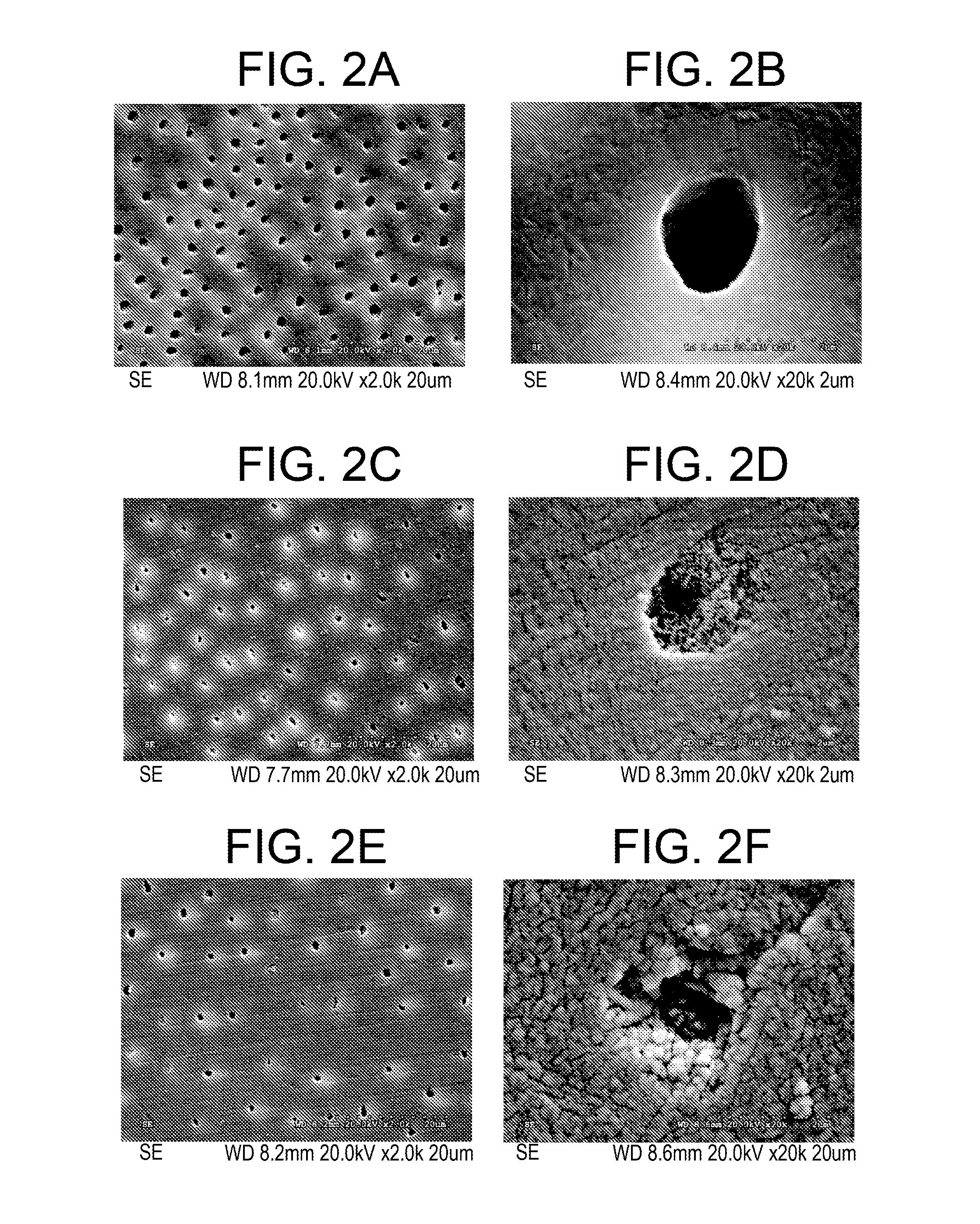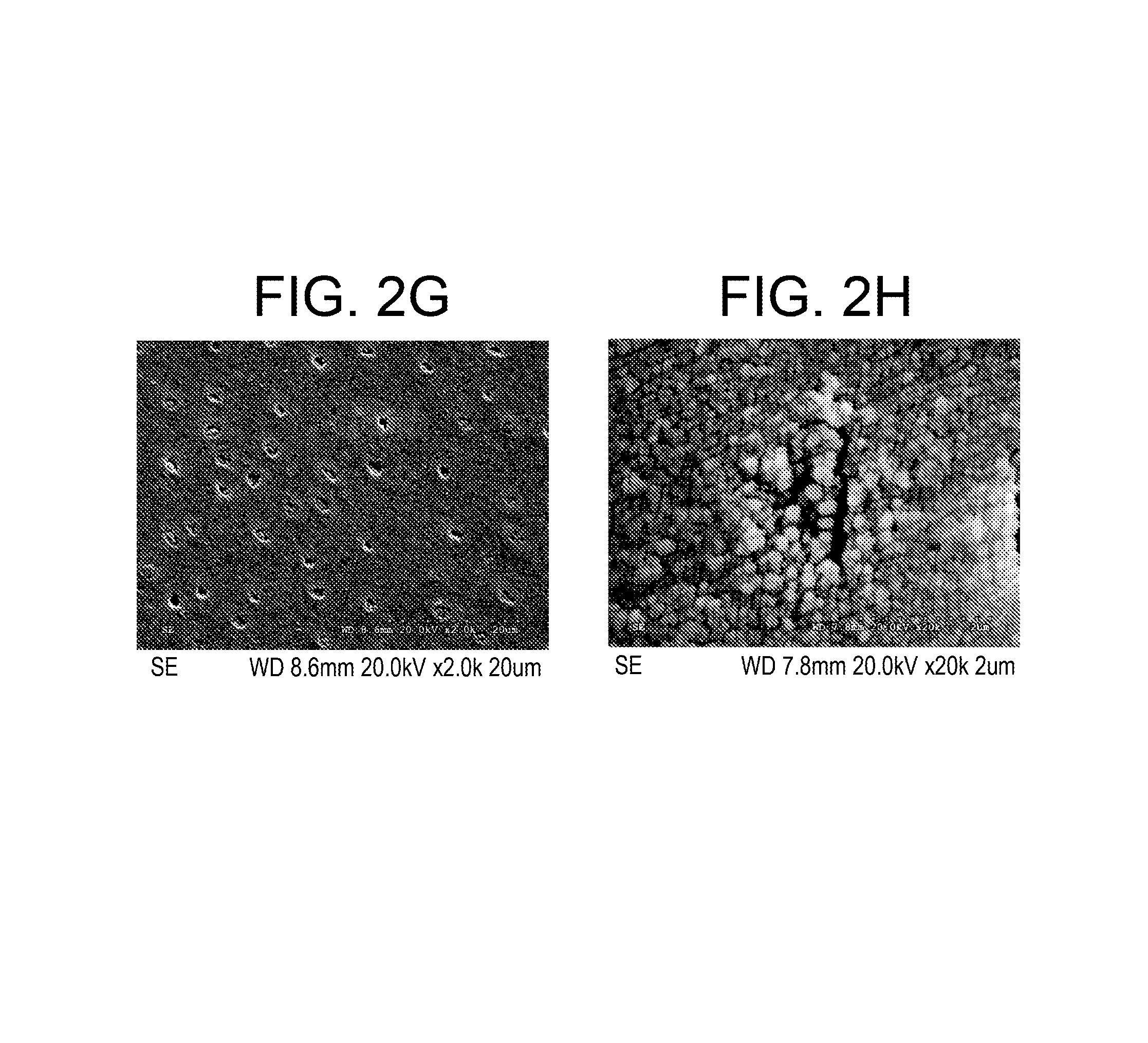Anti-bacterial and mineralizing calcium phosphate compositions
a technology of mineralizing calcium phosphate and composition, which is applied in the direction of drug composition, phosphorus oxyacid, impression caps, etc., can solve the problems of reducing the metabolism of oral bacteria, root caries becoming a significant oral health issue, etc., and achieves the resolution of p—o, increase the resolution of absorption bands, and increase the amount of deposits
- Summary
- Abstract
- Description
- Claims
- Application Information
AI Technical Summary
Benefits of technology
Problems solved by technology
Method used
Image
Examples
example 1
Materials and Methods
Preparation of the Calcium Phosphate Solutions (CaPs)
[0100]Supersaturated mineralizing solutions were prepared from mixtures of calcium deficient apatite (prepared by precipitation), sodium fluoride and zinc chloride (Fisher Scientific, New Jersey). The experimental solutions (A1, A2 and A3) were supersaturated with respect to F- and Zn-substituted apatite. A1 and A2 have similar composition but different pH values: pH 7.0 for A1 and pH 5.5 for A2. Solutions A2 and A3 had the same pH (5.5) but the A3 solution had twice the concentrations of F− and Zn2+ ions compared to A2. The actual compositions of solutions A1, A2 and A3 are provided as follows:[0101]Solution A: 1 g Calcium deficient apatite (CDA)+20 mg NaF+10 mg ZnCl2 in 10 ml 4.25% H3PO4, pH adjusted to 7 with NaOH[0102]Solution A2: 1 g Calcium deficient apatite (CDA)+20 mg NaF+10 mg ZnCl2 in 10 ml 4.25% H3PO4, pH adjusted to 5.5 with NaOH[0103]Solution A3: 1 g Calcium deficient apatite (CDA)+40 mg NaF+20 mg...
example 2
Materials and Methods
Preparation of the Calcium Phosphate Solutions
[0124]Double distilled water (DDW) was the control solution. The experimental saturated calcium phosphate (sCaP) solutions were prepared from mixtures of calcium deficient apatite (prepared by precipitation), sodium fluoride with or without zinc chloride (Fisher Scientific, New Jersey). The experimental solutions (A, B and C) were supersaturated with respect to F- and Zn-substituted calcium phosphates. Solutions A and B were similar in composition but differed in pH: A, pH 7.0; B, pH 5.5). Solutions B, C and D had the same pH (5.5) but solution C had twice the concentrations of F− and Zn2+ ions compared to solution B and Solution D had the same F ion concentration as solution C but without Zn2+ ions. The actual compositions of the solutions are provided as follows:[0125]Solution A: 1 g Calcium deficient apatite (CDA)+20 mg NaF+10 mg ZnCl2 in 10 ml 4.25% H3PO4, pH adjusted to 7 with NaOH[0126]Solution B: 1 g Calcium d...
example 3
[0153]The efficacy of calcium phosphate (CaP) solutions containing either Zn, F or both ions was determined in both minimizing dissolution of enamel surfaces and providing an antibacterial surface.
Materials and Methods
[0154]Saturated calcium phosphate solutions (sCaP) were prepared using calcium deficient apatite (CDA) (Ca(OH)2+Na2HPO4→(Ca,Na)10(PO4,HPO4)6(OH)2) at a temperature of 90° C. for a reaction time of 2 hours. Acidic saturated calcium phosphate solutions (sCaP) were prepared as follows:[0155]Solution A: CDA+NaF+ZnCl2 dissolved in HCl.[0156]Solution B: CDA+NaF dissolved in HCl.[0157]Solution C: CDA+ZnCl2 dissolved in HCl.[0158]Solution D: CDA dissolved in HCl
All the solutions were adjusted to pH 5.5 using sodium hydroxide (1M).
Analysis of CaP Solutions
[0159]ICP was used for Ca2+, P (for PO43−), Zn2+ ion concentrations and a fluoride electroder was used for the F− ion concentration.
Treatment and Characterizaion of the Enamel Sections
[0160]The enamel sections were distributed...
PUM
| Property | Measurement | Unit |
|---|---|---|
| pH | aaaaa | aaaaa |
| pH | aaaaa | aaaaa |
| pH | aaaaa | aaaaa |
Abstract
Description
Claims
Application Information
 Login to View More
Login to View More - R&D
- Intellectual Property
- Life Sciences
- Materials
- Tech Scout
- Unparalleled Data Quality
- Higher Quality Content
- 60% Fewer Hallucinations
Browse by: Latest US Patents, China's latest patents, Technical Efficacy Thesaurus, Application Domain, Technology Topic, Popular Technical Reports.
© 2025 PatSnap. All rights reserved.Legal|Privacy policy|Modern Slavery Act Transparency Statement|Sitemap|About US| Contact US: help@patsnap.com



